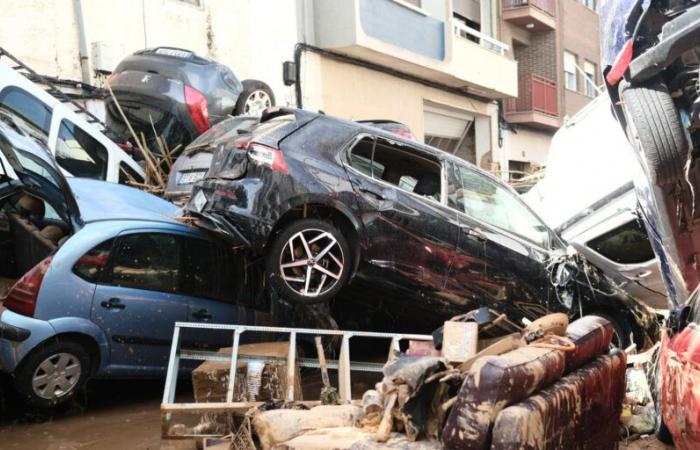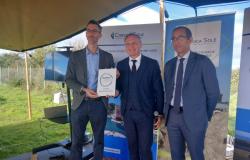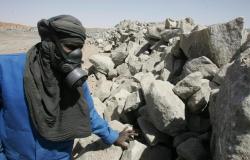
Romain Rouillard / Photo credit: Pablo Miranzo / ANADOLU / Anadolu via AFP
7:30 PM, November 01, 2024
For three days, Spain has been licking its wounds and mourning its dead. The Valencia region was the scene of devastating and deadly floods which cost the lives of 205 people, according to a report that is still provisional, but already chilling. Also terrifying are these mountains of piled-up cars, these floors covered in mud and these images of the apocalypse which convey despair and chaos.
The scale of the disaster shocked well beyond the Spanish borders where we have to go back to 1973 – when floods caused the death of 300 people – to find any trace of such a disaster. It must be said that the Valencia region is particularly prone to damage in the event of an extreme weather phenomenon. The soils there are extremely dry and artificial – consequences of urban sprawl – and the city of Valencia, populated by some 800,000 inhabitants, is located below a valley. Additional vulnerability to the risk of water runoff.
“Around Nice, it could totally be imaginable”
So many characteristics that the third city in Spain shares with several French municipalities. On the Mediterranean rim, the limited volume of precipitation associated with galloping urbanization raises a major question: can France one day suffer what Valencia suffered this week?
For François Gemenne, climatologist and co-author of the sixth part of the IPCC report, France is far from being immune. “Around Nice for example or in other surrounding towns, it could quite be imaginable. There are plenty of areas which are very concreted where a runoff phenomenon is possible”. Especially since this cold drop, at the origin of these torrents of rain, moved towards Spain from… France.
The floods which plunged Ardèche into chaos 15 days ago were caused by the same meteorological phenomenon which then raged in the Valence region. Phenomena likely to occur more frequently and more intensely due to global warming.
However, in France, despite the colossal material damage, no deaths have been recorded. Miraculous, but not necessarily inexplicable. “In Valence, people were not properly warned,” underlines François Gemenne. If the national meteorological agency had indeed issued a red alert on Monday, the alert system – in the form of a message accompanied by a shrill ringtone on the telephones – was only deployed on Tuesday at 8 p.m. while the rising waters were already submerging entire neighborhoods. As a result, many residents were outside and were trapped when the situation got out of control.
A more effective forecasting system in France?
During the last similar episode in France, the prevention work proved much more effective. The graduated vigilance system ranging from yellow to red is generally well respected and makes it possible, in the majority of cases, to avoid such a human disaster. “In the case of red vigilance, everything is managed at the ministry level and the instructions are strict,” indicates Patrick Marlière, forecaster at Agate-Météo.
“There are also pre-alert systems. Municipalities have, for example, the possibility of being alerted for a lightning strike within a 20km radius. […] When major events are in sight, insurers can contact the people concerned in advance,” he adds. So many measures which, until now, have spared France.
But nothing is infallible, tempers François Gemenne. “There may be failures. Some people were not warned during the floods in Ardèche.” Malfunctions which are therefore “not to be excluded” and whose extent may prove unexpected.





